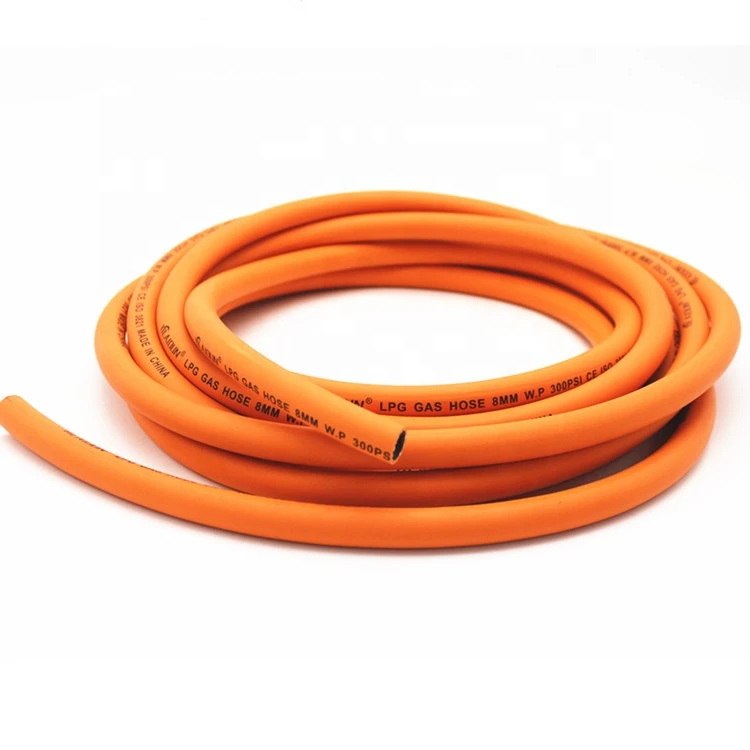LPG Hose Pipe for Safe and Efficient Gas Handling Solutions
The Importance of LPG Hose Pipes in Safe Gas Handling
Liquefied Petroleum Gas (LPG) has become a staple energy source for both residential and commercial applications. Its efficiency and versatility make it ideal for heating, cooking, and even powering vehicles. However, with the benefits of using LPG also comes the critical need for safety, particularly when it involves transportation and handling. Within this scope, LPG hose pipes play a crucial role.
What are LPG Hose Pipes?
LPG hose pipes are specialized tubes designed to transport liquefied petroleum gas from one point to another. These hoses are constructed from materials that can withstand high pressure and are resistant to the corrosive nature of LPG. Typically, LPG hoses are made from synthetic rubber, which offers both durability and flexibility, allowing them to bend easily without compromising safety.
Safety Features and Standards
The safety of LPG hose pipes cannot be overstated. When dealing with gases, any leak can pose a severe risk of explosion or fire. Therefore, LPG hose pipes must adhere to rigorous safety standards set by various regulatory bodies. For instance, in many countries, hoses must be certified to meet specific ISO standards, ensuring they can handle the pressures and temperatures associated with LPG.
Modern LPG hoses often come equipped with features such as flame resistance, ozone resistance, and UV stability to ensure their longevity and effectiveness. Additionally, some hoses have built-in leak detection mechanisms, which can alert users to any potential failures before they escalate into serious issues.
Routine Inspection and Maintenance
While LPG hose pipes are designed to be robust and reliable, routine inspection and proper maintenance are vital in extending their lifespan and ensuring safety. Users should regularly check for signs of wear and tear, such as cracks, bulges, or leaks. Any damaged hose should be replaced immediately, as continuing to use a compromised hose can lead to dangerous situations.
lpg hose pipe

Furthermore, it’s essential to ensure that the connections at both ends of the hose are secure and that the fittings are compatible with the gas equipment being used. Using the wrong type of connector can increase the risk of leaks.
Installation Considerations
The installation of LPG hose pipes is another critical aspect of safety. Professionals typically advise against DIY installations, as improper fitting can result in catastrophic failures. When contracting a service provider, it's important to choose experienced technicians familiar with LPG systems.
During installation, it's important to follow local regulations and industry best practices. For instance, hoses should be routed away from sharp edges or moving machinery that could cause damage. Adequate support should be provided to ensure that the hoses remain in place and are not subjected to unnecessary stress.
Environmental Factors
Environmental conditions can also impact the integrity of LPG hose pipes. For example, exposure to extreme temperatures, sunlight, or harsh chemicals can degrade the materials over time. Therefore, it is advisable to store LPG hoses in a shaded area and protect them from potential environmental hazards.
Conclusion
In conclusion, LPG hose pipes are a pivotal component in the safe handling and transportation of liquefied petroleum gas. With their specialized construction, adherence to safety standards, and the need for regular maintenance, these hoses play an essential role in preventing accidents and ensuring safe operations. Understanding their importance and properly caring for LPG hoses not only protects individuals and property but also contributes to the safe and responsible use of this valuable energy source. Whether for residential or commercial use, investment in quality LPG hose pipes and adhering to safety protocols is paramount in fostering a safe environment.
-
Top Quality Oxy Acetylene Hoses for Sale Fit for Welding DemandsNewsJul.28,2025
-
The Future of Pneumatic Air Tubes in IndustryNewsJul.28,2025
-
Superior and Reliable LPG Hose Pipe Solutions for Every NeedNewsJul.28,2025
-
Exceptionally Durable and Versatile Premium Braided PVC TubingNewsJul.28,2025
-
Best Adapters for Connecting Garden Hose to PVC Pipe ConnectionsNewsJul.28,2025
-
The Essential Role of LPG Hoses in Safe and Efficient Gas DistributionNewsJul.16,2025














